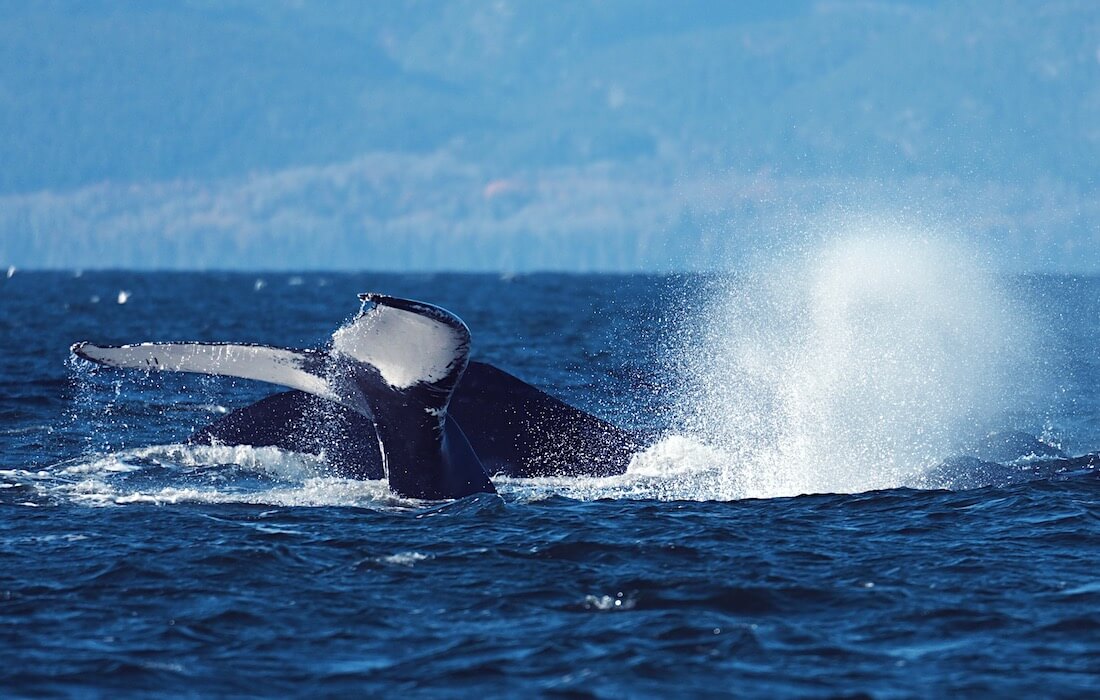Chatty males!
This week, we took advantage of the gorgeous weather to visit the downstream sector, where we regularly encounter herds of males. We make a first contact off of Île aux Pommes, but this is a herd of females with young accompanied by a newborn. Among them, we immediately recognize Géographis, a female known to our team since 1989 and easily recognizable by the extensive scarring on her right flank that recalls a world map.
Following this initial observation, we continue our journey downstream. Off Île aux Basques, we encounter two other herds. This time, we’re in the company of bulls. We recognize several belugas such as Douxi, Jetstream and DL0370. The animals are quite active on the surface; we can see their heads poking out of the water, as if to spy on us.
The encounter is also very rich in terms of acoustics. Belugas are aptly named “canaries of the sea”. We hear all kinds of vocalizations: door squeaks, whistles and much more. One particular individual retains our attention: it holds its head above water for about ten seconds and suddenly emits an incredibly powerful sound, like a whistling tea kettle. Everyone aboard looks at one another, at first speechless, then with smiles all around. We continue to be amazed and astonished by belugas!
Click on the map to navigate with the Bleuvet and discover the highlights of the week!
IDENTIFICATIONS OF THE WEEK
Douxi – adopted in 2005 by the organization of the 11th World Aquatics Championships in Montréal;
DL0370 – adopted in 2014 by the Vancouver Aquarium and still looking for a name!
JP – adopted in 2011 by Jacob Issac;
Pacalou – adopted in 2006 by Pascale Cauchi;
Neige – adopted “solidarily” in 2014 by riverside municipalities of the St. Lawrence;
Miss Frontenac – adopted in 2008 by Fairmont Le Château Frontenac;
Pure Laine – adopted in 2014 by Cynthia Fish;
not to mention DL0089, DL2114, DL0988, DL2203, DL0248, DL0204, DL1282, DL2181, DL9039, DL1007 and DL9046.
The complete list of identified belugas requires meticulous efforts to match individuals, which will be undertaken after the field season.
 Property of the GREMM and the St. Lawrence National Institute of Ecotoxicology, the Bleuvet is a research boat dedicated to the research program on St. Lawrence belugas. Managed by GREMM scientific director Robert Michaud, the Bleuvet crew is composed of Michel Moisan, Tim Perrero and Simon Moisan.
Property of the GREMM and the St. Lawrence National Institute of Ecotoxicology, the Bleuvet is a research boat dedicated to the research program on St. Lawrence belugas. Managed by GREMM scientific director Robert Michaud, the Bleuvet crew is composed of Michel Moisan, Tim Perrero and Simon Moisan.




